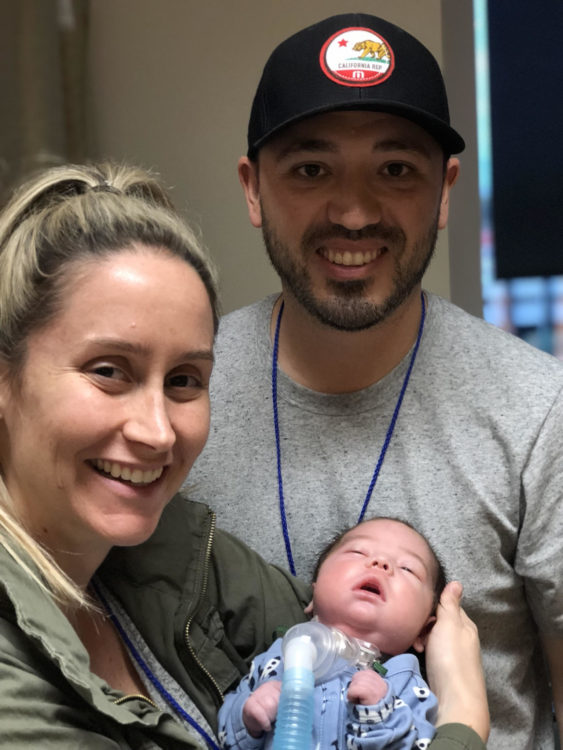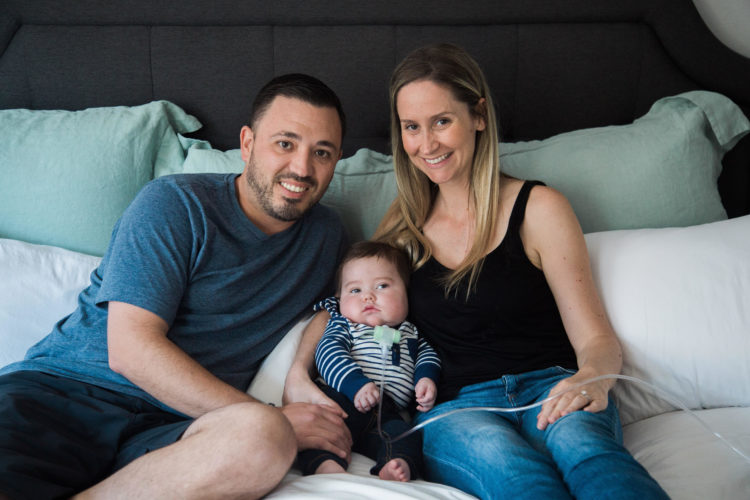We didn’t know anything was wrong until the day James was born. He was unable to breathe and was immediately intubated. After he was stable, the NICU team at our local hospital decided it was best to send James that night to our local children’s hospital.
We spent almost a month in the NICU there where we found out that James has bilateral vocal chord paralysis, hypotonia and is unable to suck or swallow. Because of all of this, James received his tracheostomy and gastronomy tube surgeries within the first few weeks of his life. We ran every test, yet the doctors still couldn’t tell us what was causing all of this, and we were discharged from the hospital.

Two weeks after being discharged, we received a call from our geneticist who let us know she had found our answer. James has an extremely rare genetic mutation of the CNTNAP1 gene.
What is CNTNAP1? Recessive mutations in CNTNAP1 lead to a loss of function for the gene and its protein product CASPR causes disruption of the myelinating cells from the signal transmitting nerve cell axons. This has profound negative effects on the development and maintenance of many nerve fibers in the central and peripheral nervous system, causing demyelination and weakness, similar to the group of Charcot-Marie Tooth (CMT) disorders.
This genetic disorder makes it difficult for James’ brain to communicate to his muscles. Now we understand why his body reacts the way it does. He is unable to move like a “typical” child and is unable to use his voice. There is no cure — yet.
Since coming home from the hospital, and after consistent therapy, James has learned how to swallow, move his head and his arms and legs (at times) and recently learned how to smile. We pray for a day that we can hear our sweet boy cry or laugh. We are hopeful that with consistent physical therapy and occupational therapy, James will continue to have “inch-stones” that we can celebrate.
My husband and I have found four other families from around the world whose children also have this rare genetic mutation, the oldest is 5 and the youngest is our son, James, who just turned 1. When we first received the diagnosis for our son, it was lonely and isolating. I didn’t know where or who to turn to when we had questions. These other four families have given us so much support and guidance at times when our doctors didn’t know what to tell us. These doctors have ever seen a child like James before and don’t know what our future looks like.
To grow our CNTNAP1 community, we have teamed up with the Hereditary Neuropathy Foundation in hopes of finding other families who have children with CNTNAP1 to work together on research. We are hoping to connect with other families whose children have the CNTNAP1 mutation and offer the same support and friendship that we have received. We hope you’ll join us in making a difference for our CNTNAP1 kids.

To learn more about James and CNTNAP1 visit www.jamescure.org or reach out via Facebook.

